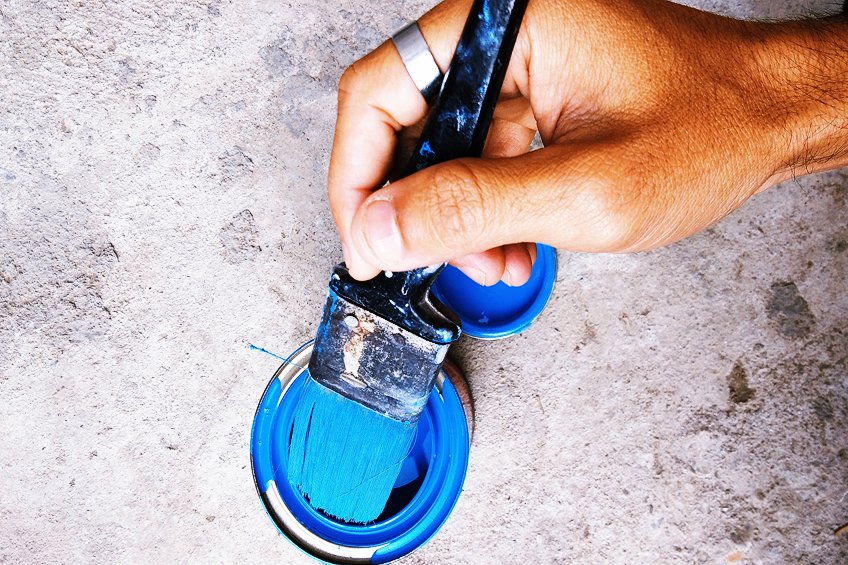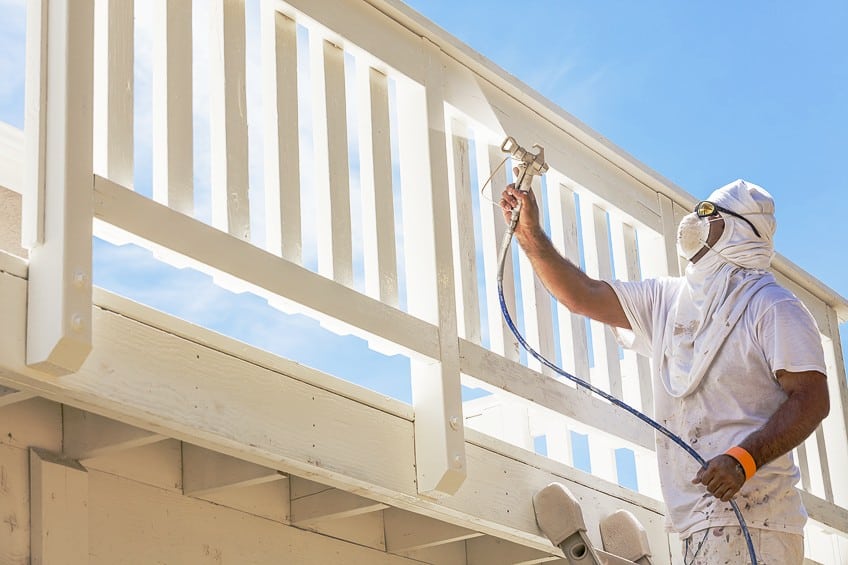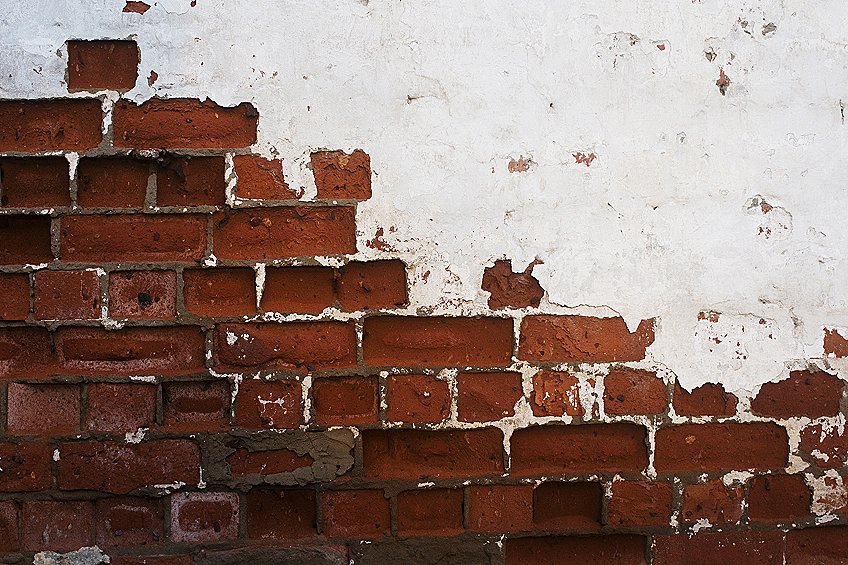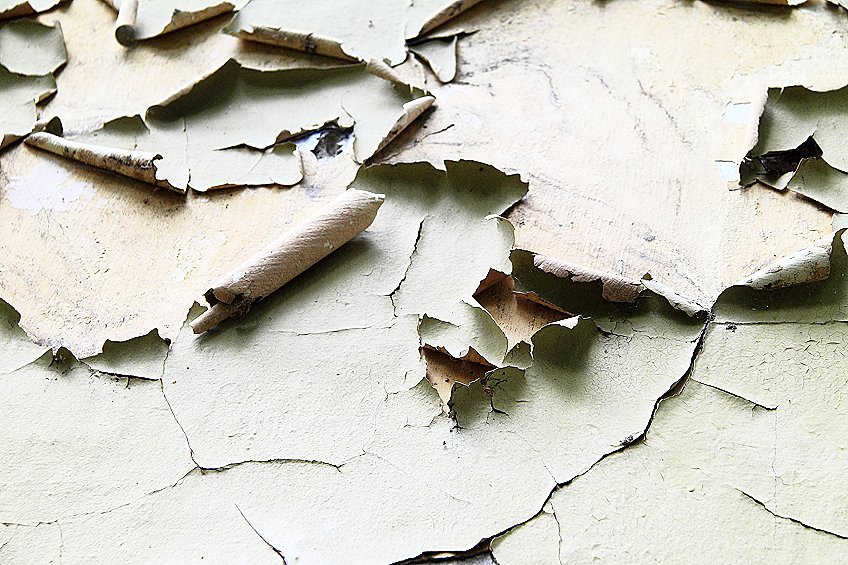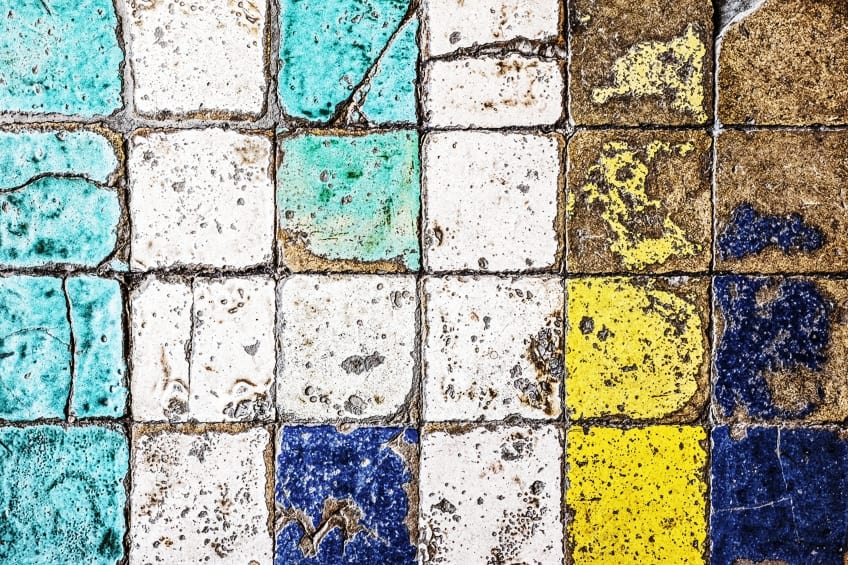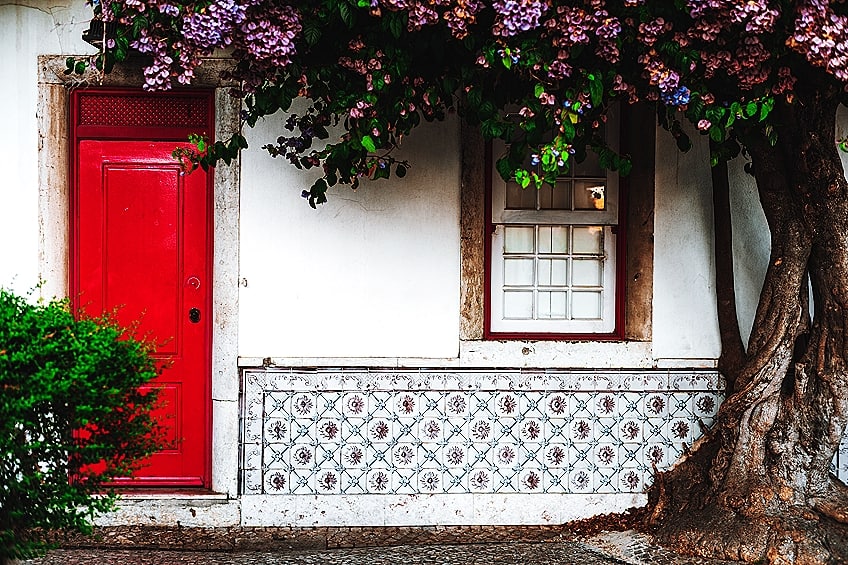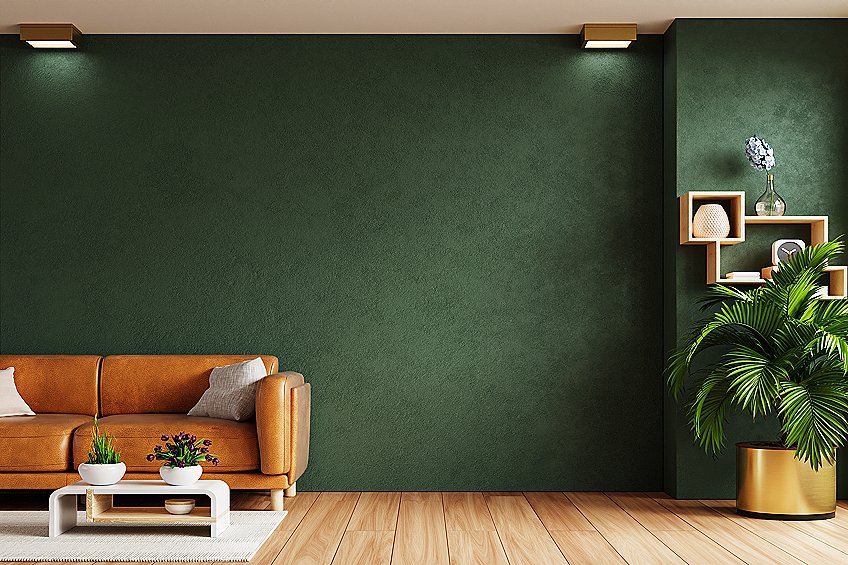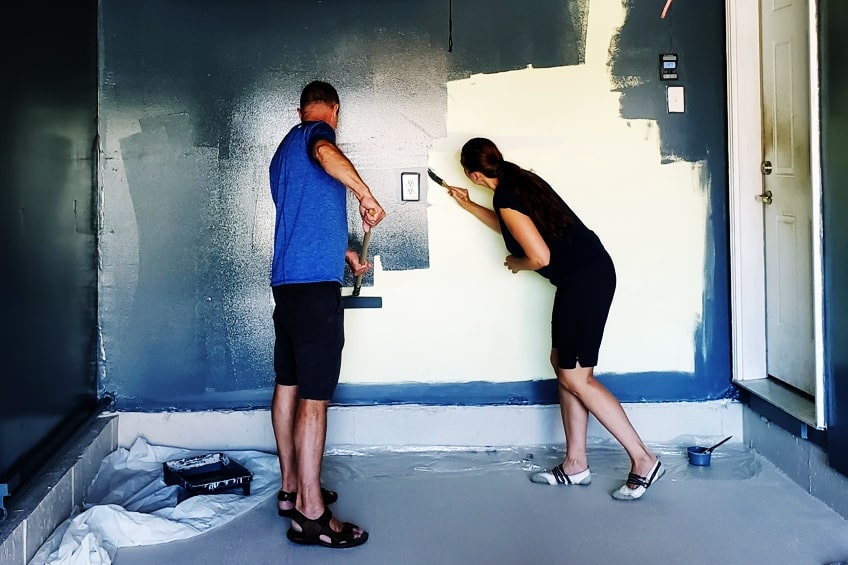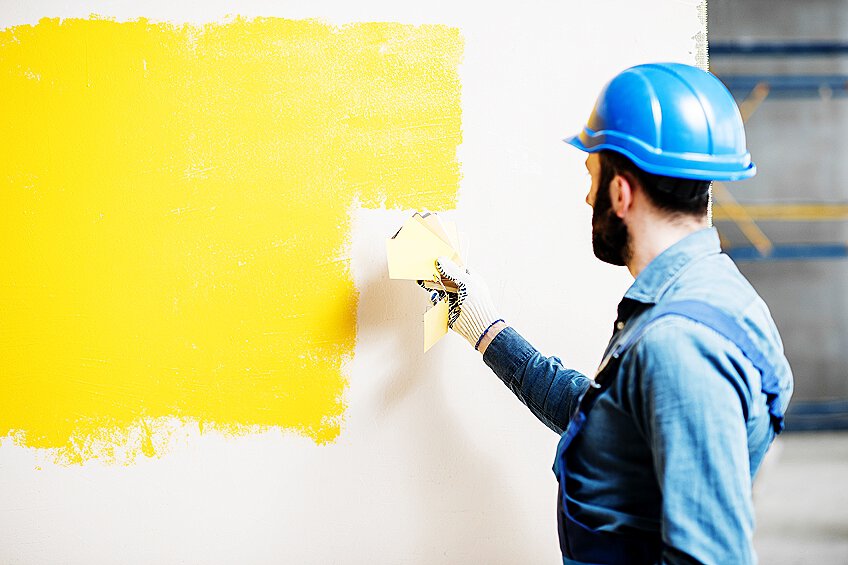How Often Should You Paint Your House? – A Realistic DIY Guide
This post may contain affiliate links. We may earn a small commission from purchases made through them, at no additional cost to you. You help to support resin-expert.com
For most people, painting the outside of their home isn’t a top priority. After all, we see the outside far less than we do the inside, so it isn’t exactly at the top of most of our home-improvement lists. However, painting is one of the most important things one can do when it comes to home maintenance, so how ever often should you paint the exterior of your house? Well, this depends on various factors, so let’s have a look at how often you should paint your home based on these factor, and what to take into account when making your decision.
Table of Contents
Factors That Influence How Often You Paint Your House
You may have noticed that some people have to repaint their homes more often than others, and there can be a number of reasons for this aside from personal preference. That’s why we’ve put together a list of factors that could lead lead either to repaint their home and how these factors can degrade or otherwise influence your home’s exterior.
Climate and Weather
Something that regularly affects the durability and appearance of your home’s exterior is the climate and weather conditions of the area you live in. Exterior paint is designed to put up with the elements constantly, but even paints that have been specially formulated for this application have their limits and will eventually fail if subjected to consistent punishment by the elements constantly, but even paints that have been specially formulated for this application have their limits and will eventually fail if subjected to consistent punishment by the elements.
This means that if you live in an area that consistently experiences adverse weather conditions, you’ll likely find yourself spot-repairing or completely repainting the outside of your home far more of those than those live who live in areas with favorable weather conditions. Remember that your paint has to put up with wind, rain, UV, heat, cold, and possibly snow and sand too.
The Quality of Paint You Use
The old saying goes that you get what you pay for, and even if this doesn’t apply to everything, it usually rings true when it comes to painting. Not all paint brands are equal, with the difference in quality between some brands being quite staggering.
Therefore, when painting the exterior of your home, it’s best not to go with higher-quality paints, even if the cost a little bit more.
There are paints that have been specially designed for use with home exteriors. They are usually super durable and can be applied with both a paint sprayer and a brush and roller, but the top-shelf stuff can be really expensive. That being said, you don’t have to spring for the super-expensive brands, as long as your paint is of decent quality.
The Previous Paint Job
If you are repainting your home yourself and think you can save some time by simply painting over the existing paint job, this can cause your coat to peel away, crack, and lift way faster than it would if it were applied properly. Why does this happen? Without the surface being cleaned, sanded, and primed, your new coat will not adhere correctly.
If you aren’t too keen on sanding the surface you could hire hire some professionals to sandblast your walls, or you could use some paint stripper to ensure that all of the existing coating is completely removed. Either of these methods should work fairly well and give you a fresh surface to prepare and paint once you’re done.
Irregular or Failure to Do Maintenance
Since we see the inside of our homes more than we see the outside, it’s understandable that sometimes our exterior paint jobs get neglected. After all, painting the outside of a home can be a lot of work, and if you aren’t vigilant by inspecting the surfaces of your home regularly, it could lead to your paint job falling apart over time.
People tend to only really inspect the exterior walls of their home before a major change of season or after some nasty weather.
Checking your paint and your walls more often will allow you to spot and repair any damaged or peeling areas before the problem has an opportunity to spread to the rest of your home. All it takes is giving your home a regular once-over, whether it be once a week or once a month.
Signs That It’s Time to Paint Your House
Regardless of the size and shape of your home, there are some universal signs that you can look out for that indicate that it’s time to paint your house. These signs can be subtle or really obvious, but if you don’t know what you’re looking for, it’s a pointless exercise. This is why we’ve made a list of things you look out for that are a good indicator that it’s time to paint your home.
Cracking or Flaking Paint
A dead giveaway that your home needs to be painted is when the paint starts to peel away from the surface of your wall. This can start off small, but over time cracking and flaking paint can spread to the rest of the wall, and even to other walls if they are connected.
Cracking or flaking can happen for a number of reasons and is a solid indicator that your paint has reached the end of its lifespan.
Paint usually flakes as a result of a failure to expand and contract uniformly, overexposure to heat or cold, or if it fails to adhere to the surface of your walls correctly. When paint begins to crack, flake, or peel, the only option you have left is to remove the existing coating and replace it with a new one (unfortunately).
Fading Paint Coating
When it comes down to it, paint is just a surface coating. Sure, paints have become more durable and versatile over the years, but they still serve the same essential function. They aren’t infallible either, so you will have to ensure that the paint you choose to paint your home is durable enough to withstand the effects of the weather conditions in your area.
A good way to tell if your paint isn’t up to the challenge is if it fades very quickly after it has been applied.
Faded paint, therefore, doesn’t only take away from the aesthetic appeal of your home, but is also a sign that your paint will soon begin to crack and peel away from the wall in question. Knowing this, if your paint is badly faded, it’s a sign that you need to repaint your home.
Hardened Caulk
Caulk is a quick and easy way to span a gap and insulate areas of your home, and it’s usually applied (a home is a quick and easy way to span a gap and insulate areas of your home, and it’s usually applied when a home is remodeled or repainted. Caulk has the inherent ability to expand and contract along with your home as it encounters colder and warmer weather. However, much like paint, caulk has a lifespan of its own.
Caulk will eventually begin to harden over time much the same way that paint does, and once hardens it may begin to crack over time. Since caulk and paint are usually installed at the same time, when your caulk begins to lose its elasticity and crack, it’s usually a good indicator that your paint needs to be replaced.
Patching Stucco
If you find yourself needing to re-stucco your entire home, this is usually a good indicator that your home could use a fresh coat of paint. If you’re rough with what stucco is, it’s essentially a spot-repair tool used to repair damaged walls or trim. While stucco is unnoticeable in small amounts, it can unsightly when used used constantly, as it doesn’t quite blend into the rest of the surface. Therefore, if your paint has degraded to the point where this is the position you find yourself in, it’s time to re-paint your home.
Aside from being the most logical course of action, it will so give you the opportunity to discover the reason why your paint is coming off in the first place. With that being said, don’t overdo it with your stucco if you can help it.
The Color of Your Paint Has Warped
All paint colors tend to change slightly over time, but if your paint was beige when you applied it and it has now become a bright pink, you might want to consider repainting the surface in question. Remember, the paint will be exposed to things like UV light and other forces while outdoors, so it will never be as crisp or as vibrant as when you applied it.
If it’s a completely different color though, you should consider repainting the affected surface. A stark change in color like this usually happens if interior paint is used to paint an exterior surface, and if this is the case, we recommend repainting as soon as possible. This can cause your surface to take on unnecessary stress and damage, so it’s best to get your new paint job done quickly.
You Want to Change the Look of Your Home
Not every reason to paint your home needs to be because your paint job is failing. Perhaps you have an excellent existing paint job but the overall look of your home has become a bit dated. If you’re on the fence, this is still an excellent reason to replace your existing paint job with something a bit more modern.
Many people wait until their paint job is falling apart to replace it, but you can replace your paint job at any given time, given that you know what to do and how to go about it. So why wait? We replace our smartphones and clothing to remain relevant to the times we live in, so why not the same with your home’s exterior?
Frequency of Painting Parts of Your Home
Depending on where you live and what type of life you lead, you could find yourself resurfacing some parts of your home more than others. This makes sense considering that different parts of your home will be subjected to different forces according to your local weather and what parts of your home see the most traffic. To make things a bit easier for you when creating a maintenance schedule, we’ve outlined how often you should repaint or resurface different parts of your home.
Exterior of Your Home
As we mentioned previously, exterior paint is designed to soak up wear and tear and therefore does not need to be repainted as often as the interior sections of your home. How often should you be painting the exterior of your home though? In most instances, you should be painting the exterior of your home every five to 10 years.
There are a lot of factors that determine the time it takes your paint to break down. Between local weather patterns, the type of paint you use, what direction your house faces, and humidity, the frequency of care can vary considerably. All you can really do is keep an eye out for indicators and check up on your home regularly.
Kitchens, Bathrooms, Trim, and Baseboards
The more traffic a part of your home hosts, the faster paint tends to degrade. It should come as no surprise then that the kitchen and bathroom of your home, which are used every day in many households, tend to require the most maintenance.
Again, if you’ve used high-quality paint and/or sealed certain surfaces, these surfaces may require less frequent maintenance.
As for your trim and baseboards, these tend to take a lot of scuffing and scratching over time, as they see the most physical contact with foot traffic over their lifetime. Again, sealing these surfaces can help, but even protective layers can degrade over time, in which case you’ll find yourself buffing scuffs out of the sealer or simply resurfacing these surfaces entirely.
Living Rooms and Dining Rooms
Living rooms and dining rooms can vary in their frequency of care. Some of us make regular use of these spaces and others only use them when entertaining friends and family, so the amount of wear they endure is largely subjective. If you would like a ballpark time frame regarding care for these areas, five to seven years is a safe bet.
If your home has a lot of occupants that make use of the space consistently and create a lot of foot traffic, then your maintenance period will lean toward the more frequent end of this spectrum. If you have more space than people to occupy it, your maintenance is likely to be less frequent, so use this as a rule of thumb when it comes to repainting living rooms and dining rooms.
Bedrooms and Hallways
Bedrooms are usually used every single day, and they tend to be where we keep our clothing and personal belongings, and spend a large portion of our time (sleeping). They tend to be the most personal of spaces, and as a result, can take on some damage to their paint over time.
Bedrooms generally need to be repainted often depending on their size, so every two years for smaller ones, and every eight years for larger ones.
Hallways are highly trafficked areas that lead to different sections of the home. Think of them as the highways between living quarters, and as a result, they tend to take on a bit of damage over time. Hallways should be monitored and maintained fairly regular, with many professionals recommending they be repainted every two to four years.
DIY vs. Professional Painters
The DIY vs. professional discussion has been going on for as long as services have been offered. Whether you’re fixing your car, making your own clothing, repairing electronics, or applying makeup, you probably aren’t going to do quite as good of a job as a professional. However, there are some advantages to doing it yourself, so let’s have a look at the value of each approach.
Doing It Yourself
You are a knowledgeable and skilled weekend warrior who isn’t afraid of a little paint, but do you have the time? Sure, you’ll save a lot of money, and you’ll have the satisfaction of knowing you’ve done itself, but taking on a project like painting your home is time-consuming, exhausting, and at times, extremely tedious.
You will have to decide on what paint is best, purchase your supplies, prepare the space, prepare your surfaces, clean your surfaces, and apply your paint all on your own (if you don’t have any help) This can take a few days, and if you have a full-time job, it can make thing things stressful, tiring, and frusrating. However, you will be able to save a lot of money, and you’ll be able to get the exact look you are going for!
Hiring Professionals
Hiring professionals might not always be the best option but there are some advantages to having people who liter paint for a living resurface your walls. They already have all the tools they need, they already know which paints are the best for your surface, and they have more manpower so the job will go a lot faster than you working alone.
However, you’re going to put up with workers on your property, loud noises, as well as the price of the materials and labor. The high price tag might be off-putting, but it does mean that you are free to do anything you want while the pros handle the painting. We recommend hiring professionals if the scope of the job is outside of your comfort zone.
How often should you paint your house then? This question is more about how much damage your paint job takes and the factors that influence said damage. Assess the foot traffic, weather conditions, and other external forces that could degrade your paint to determine how long your paint will last, and therefore, how often it will need to be repainted.
Frequently Asked Questions
How Often Should You Paint a House’s Exterior?
With the changing of seasons and the rise of acidic rainfall, you might be asking yourself how often to paint house exterior surfaces. This depends on the type of paint, where you live, and other forces that the paint is subjected to. Therefore, if you are wondering how often to paint house exterior surfaces, simply monitor the durability of your existing paint job.
Does Your House Need to Be Repainted Regularly?
Regardless of where it is situated or what it’s attached to, paint is paint. Home exterior paint is incredibly durable, but it’s only meant to last a few years before begins its to fade and eventually peel. Most homeowners paint their exterior walls every seven to ten years or so.
Is the Paint on Your Home’s Exterior Important?
Yes, the paint on the outside of your home serves a number of important functions. For one, it improves the overall appeal of your home. It also insulates the interior in the winter and makes it marginally cooler in the summer, expanding and contracting as needed.


